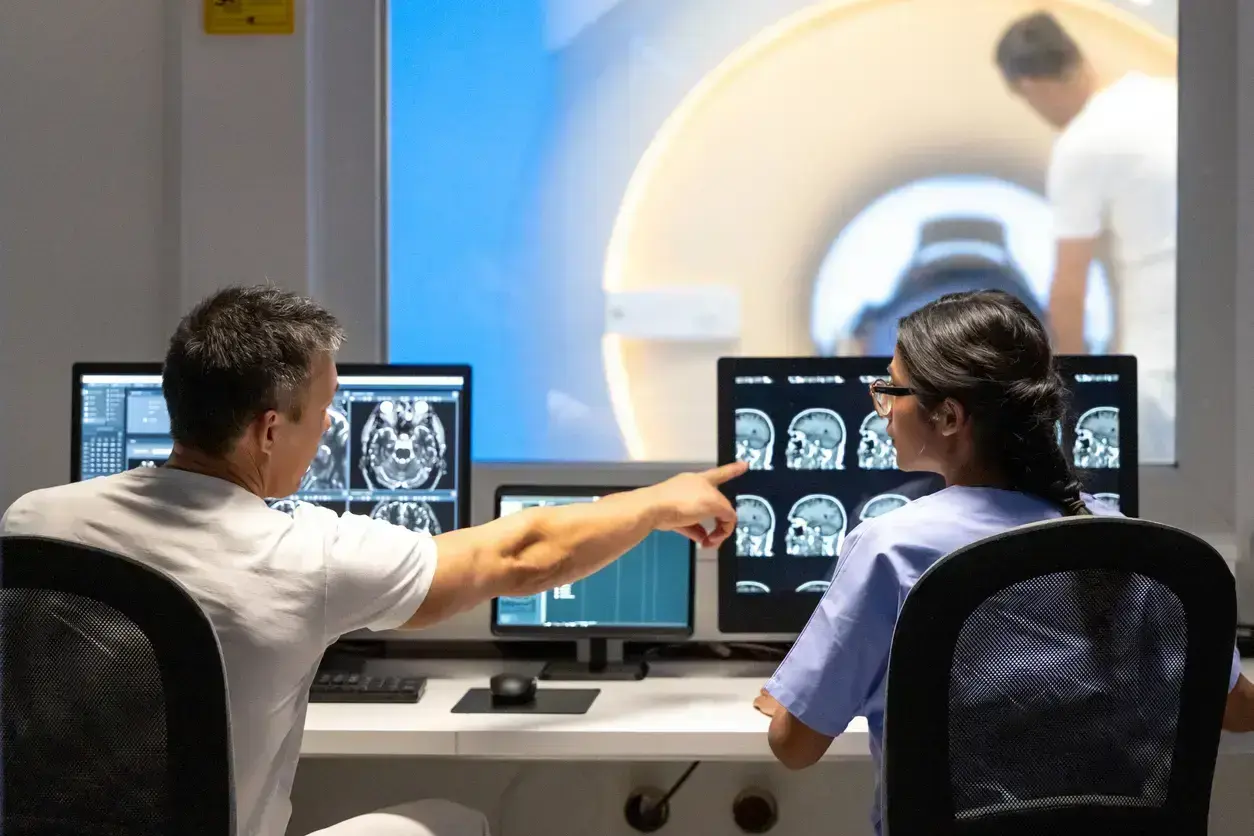Alzheimer’s disease is not part of normal aging. It is a brain disorder and not all people with cerebral amyloid deposition develop dementia. Expression of the phenotype depends on an individual’s genes and environmental exposures. A new probabilistic model of Alzheimer’s disease has therefore been proposed with three key variants, explained experts at ADPD2022.
알츠하이머병은 정상적인 노화 과정의 일부가 아닙니다. 알츠하이머병은 뇌질환으로, 대뇌 아밀로이드 침착이 있는 사람 모두가 치매에 걸리는 것은 아닙니다. 개개인의 유전자 및 노출되는 환경에 따라 발현이 달라집니다. 이에 따라 전문가들은 ADPD2022에서 알츠하이머병의 세 가지 주요 유형에 대한 새로운 확률모델이 제시되었음을 설명하였습니다.
The three key variants of Alzheimer’s disease
알츠하이머병의 세 가지 주요 유형
New research has led to the differentiation of three types of Alzheimer’s disease — the rare autosomal dominant form and two more common sporadic forms,1 said Professor Giovanni Frisoni, University of Geneva, Switzerland.
새로운 연구 결과, 알츠하이머병은 세 가지 유형(드물게 나타나는 상염색체 우성 유형과 좀 더 흔히 나타나는 두 가지 산발성 유형1)으로 분류되었습니다 - 스위스 제네바 대학교의 지오바니 프리소니(Giovanni Frisoni) 교수
Not all people with cerebral amyloid deposition develop Alzheimer’s disease
대뇌 아밀로이드 침착이 있는 사람 모두가 알츠하이머병에 걸리는 것은 아닙니다.
The deterministic four-step pathophysiologic model of Alzheimer’s disease (AD) is amyloid deposition in the cerebral cortex, followed by an increase in hyperphosphorylated tau protein, neurodegeneration, and memory loss. However, this model applies only to people with autosomal dominant AD, explained Professor Frisoni.
알츠하이머병(AD)의 결정적 4단계 병태생리학적 모델에 따르면 대뇌 피질에 아밀로이드 침착이 발생하고 뒤이어 과인산화된 타우 단백질 증가, 신경변성, 기억력 소실이 나타나게 됩니다. 그러나, 이 모델은 상염색체 우성 알츠하이머병 환자에게만 적용된다고 프리소니 교수는 설명했습니다.
Sporadic cases of AD are much more common than autosomal dominant AD, and Professor Frisoni and his colleagues have identified two sporadic variants, one related to apolipoprotein E ε4 (ApoE ε4) and one unrelated to ApoE ε4.
산발성 유형의 AD는 상염색체 우성 유형의 AD보다 훨씬 더 흔하게 나타나며, 프리소니 교수와 그 동료들은 두 가지 산발 유형인 아포지단백 E ε4(ApoE ε4) 연관 유형과 ApoE ε4비연관 유형을 확인했습니다.
Lifestyle influences the expression of the phenotype of sporadic Alzheimer’s disease
생활방식은 산발성 알츠하이머병의 표현형 발현에 영향을 미칩니다.
Environmental exposures (ie, stochastic factors) and lower-risk genes mean that not all people with cerebral amyloid deposition develop ApoE ε4-related and ApoE ε4-unrelated sporadic AD,1 said Professor Frisoni, with lifestyle influencing expression of the phenotype.
환경에 대한 노출(즉, 확률적 요인)과 위험도가 더 낮은 유전자는 대뇌 아밀로이드 침착이 있는 사람들 모두가 ApoE ε4연관 AD 및 ApoE ε4 비연관 산발성 AD에 걸리는 것은 아님을 의미하며1 생활방식이 표현형 발현에 영향을 미친다고 프리소니 교수는 말했습니다.
Professor Frisoni and his colleagues have therefore proposed a probabilistic model for AD in which genes and environmental factors determine the penetrance of the AD trait.1
이에 따라 프리소니 교수와 그 동료들은 유전자와 환경 요인이 AD의 특성을 결정한다는 확률적 모델을 제안했습니다.1
Strategies to lower the risk of Alzheimer’s disease
알츠하이머병의 위험도를 낮추는 전략
40% of cases of Alzheimer’s disease might be prevented through strategies to modify 12 risk factors
알츠하이머병 사례 중 40%는 12가지 위험 인자를 조절하는 전략을 통해 예방할 수 있습니다.
Dementia is a brain disorder and not part of normal aging, said Professor Miia Kivipelto, Karolinska Institute, Stockholm, Sweden.
치매는 뇌질환으로 정상적인 노화 과정의 일부가 아니라고 스웨덴 스톡홀름 소재 카롤린스카 연구소 미아 키비펠토(Miia Kivipelto) 교수가 말했습니다.
It is never too early to start to prevent AD, and 40% of cases might be prevented through strategies to modify 12 risk factors,2 she added. These risk factors are obesity, high blood pressure in mid-life, diabetes, excessive use of alcohol, smoking, air pollution, poor education, physical inactivity, depression, social isolation, hearing loss, and head injury.
AD 예방은 빠르게 시작하는 것이 좋으며, 12가지 위험 인자를 조절하는 전략을 통해 AD 사례의 40%를 예방할 수 있다고2 키비펠토 교수는 덧붙였습니다. 이러한 위험 인자에는 비만, 중년에 발생하는 고혈압, 당뇨병, 과도한 알코올 섭취, 흡연, 대기 오염, 낮은 교육 수준, 적은 신체활동, 우울증, 사회적 고립, 난청, 두부 외상이 있습니다.
A healthy lifestyle lowers the risk of dementia, which is a brain disorder and not part of normal aging
건강한 생활방식은 정상적인 노화 과정이 아닌 뇌 질환에 해당하는 치매의 발생 위험을 낮춰줍니다.
The “Six pillars of Brain Health,” advocated by the Cleveland Clinic to address these risk factors are therefore:
- Physical exercise
- A healthy diet
- Controlling medical risk factors such as hypertension, diabetes, high cholesterol, and smoking
- Regular sleep and relaxation
- Mental fitness and stimulation
- Social interaction and engagement3
따라서 위험 인자를 다루기 위해 클리블랜드 클리닉에서 주장하는 “뇌 건강의 6가지 기둥”은 다음과 같습니다.
- 신체 운동
- 건강한 식이
- 고혈압, 당뇨병, 높은 콜레스테롤 수치 및 흡연과 같은 의학적 위험 인자 조절
- 규칙적 수면 및 휴식
- 정신 건강 및 자극
- 사회적 상호작용 및 참여3
The changing landscape of early Alzheimer’s disease diagnosis
초기 알츠하이머병 진단 동향의 변화
In 2018, the National Institute on Aging and Alzheimer’s Association Research Framework proposed the use of biomarkers for amyloid beta deposition, pathologic tau, and neurodegeneration for defining and staging AD for research purposes.4 However, the new probabilistic model for AD means that people can test positive for these biomarkers but will never develop AD,5 said Professor Frisoni.
2018년에 미 국립노화연구소 및 알츠하이머병 협회의 연구 프레임워크에 따르면 연구 목적으로 AD를 정의하고 병기를 판정하기 위해 아밀로이드 베타 침착, 병리학적 타우 단백질 및 신경변성에 대한 바이오마커 사용을 제안했습니다.4 그러나, AD에 대한 새로운 확률적 모델은 사람들이 이러한 바이오마커에 대해 양성 반응을 보이더라도 결코 AD로 발전하지 않을 수도 있음을 의미한다고5 프리소니 교수는 말했습니다.
Biomarkers alone are not enough to diagnose early Alzheimer’s disease
바이오마커만으로는 초기 알츠하이머병을 진단하기에 충분하지 않습니다.
It has therefore been recommended that:
- A diagnosis of Alzheimer's disease should be restricted to people who have positive biomarkers in addition to specific Alzheimer's disease phenotypes
- Cognitively unimpaired individuals with positive biomarkers should be considered only at risk for progression to Alzheimer's disease5
따라서 다음을 권장합니다.
- 알츠하이머병 진단 시, 특정 알츠하이머병 표현형과 더불어 바이오마커에 양성인지를 함께 확인해야 합니다.
- 바이오마커에 양성을 나타내나 인지 기능이 손상되지 않은 사람은 알츠하이머병으로 진전될 위험이 있는 것으로만 간주되어야 합니다.5
This industry symposium was funded by Biogen.
이 산업 심포지엄은 바이오젠(Biogen)의 자금 지원을 받았습니다.
Our correspondent’s highlights from the symposium are meant as a fair representation of the scientific content presented. The views and opinions expressed on this page do not necessarily reflect those of Lundbeck.




